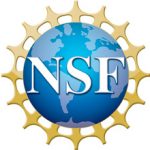Funding agency
Award number
CNS-1730148Dates
October 1, 2017-September 30, 2019Description
Wireless data traffic has surged in recent years due to a change in the way society today creates, shares, and consumes information. Accompanying this change is an increasing demand for faster, more ubiquitous wireless communication networks. As a result, wireless Terabit-per-second (Tbps) links are expected to become a necessity within the next five to ten years. Terahertz (THz)-band (0.1 to 10 THz) communication is envisioned as a key technology to meet this demand. For many years, the lack of compact and efficient ways to generate and detect THz-band signals limited the feasibility of such communication systems. Ongoing advances in THz generation and detection schemes are making sources and detectors more readily available, but no platform currently exists to experimentally demonstrate wireless communication at true THz frequencies. The objective of this TeraNova project is to develop the first integrated testbed specific to ultra-broadband communication networks at true terahertz frequencies (i.e., 1 THz and above).
The main components of the testbed are as follows. In transmission, a Schottky-diode-based frequency multiplier and amplifier is used to generate a THz carrier signal in the first absorption-defined transmission window above 1 THz, i.e., between 1 and 1.075 THz. A sub-harmonic mixer based on the same technology is used to modulate the THz carrier signal with the broadband signal to be transmitted, which is generated by means of a broadband arbitrary-waveform generator. The waveform generator has an analog bandwidth of 32 Gigahertz (GHz) per channel and high sampling rate with 8-bit resolution. Each waveform can be defined allowing precise control of baseband signals. In reception, the same setup is used to down-convert the modulated THz signal and recover the transmitted symbols. The downconverted signal is displayed and stored, prior to demodulation and signal processing, by means of a high performance digital oscilloscope, which has up to 63 GHz of analog bandwidth for one channel or 33 GHz per channel with two channels. The described TeraNova testbed enables new CISE-related research opportunities, including development and validation of (i) accurate THz channel models, (ii) ultra-broadband modulation and demodulation techniques, and (iii) ultra-massive MIMO communication schemes, among others. In addition, the TeraNova testbed serves as a unique platform to test and benchmark novel plasmonic THz devices for communications.

